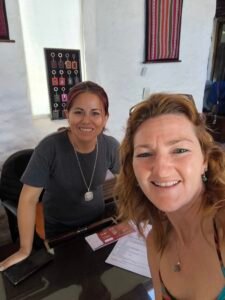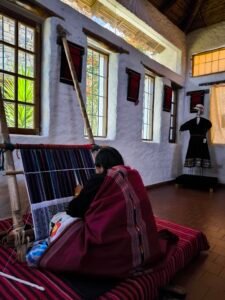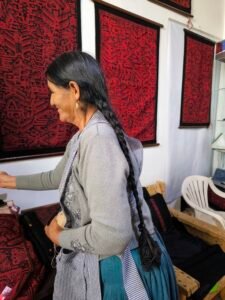Bolivia: Women, Stories, and Traditions That Stand the Test of Time
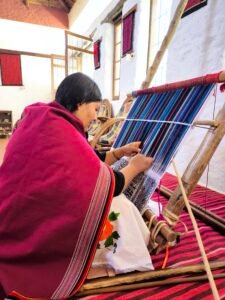
La Recoleta: A Journey Through Indigenous Traditions in Bolivia

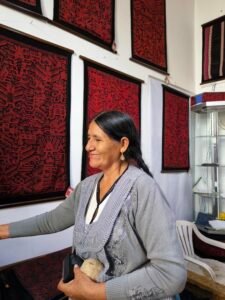
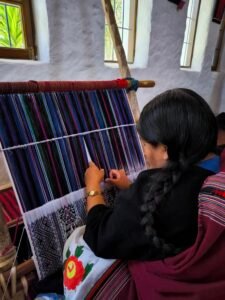
Before leaving Sucre for Potosí, I decide to explore the historic Recoleta neighborhood. After a breakfast of fresh mango juice prepared by Agostine, I start climbing the steep streets and stairways, decorated with colorful murals that are true works of art. Each mural carries a message, but one in particular catches my attention. It stands at the top of the staircase leading to the museum I am about to visit, depicting a panoramic view of Sucre with the Andes in the background. The words, written in Spanish, translate to:
“We may not have everything, but we have all we need.”
Simple yet profound words that invite reflection. They embody the resilience and authenticity of Bolivian culture, a culture deeply rooted in traditions and identity.
The energy in this city is incredible. Finally, I reach my destination: the Museum of Indigenous Ethnicities. Calling it a museum feels almost reductive—it is a living, breathing cultural space, preserving century-old traditions while supporting the local economy and the livelihood of the Yampara women. The center is entirely self-sustained, funded solely by entrance fees (currently 25 bolivianos, which I gladly pay to support the cause) and the sale of handcrafted textiles displayed inside.
The textiles here are works of art, meticulously handmade, embodying an ancestral tradition passed down through generations. Every indigenous woman carries this knowledge within her DNA, transmitted from mother to daughter. Grandmothers play a crucial role in keeping this memory alive, sharing stories and anecdotes with their granddaughters, ensuring that the art of weaving remains an intrinsic part of their cultural identity.
A Living Legacy of Weaving and Identity
Visiting the Museum of Indigenous Ethnicities feels like stepping into an ancient world. The Yampara women weave by hand using techniques passed down for centuries. Each piece—whether an axsu or a poncho—is unique, woven with stories of marriages, rituals, and daily life.
I’m fascinated to learn that creating a single axsu can take months of meticulous work. The result is not just a textile but a masterpiece that celebrates indigenous culture and identity. These weavings are not merely decorative—they are symbols of resilience, an act of preserving a connection to the past in an increasingly globalized and homogenized world.
It’s no surprise that these handmade textiles are recognized by UNESCO as Intangible Cultural Heritage. Reflecting on this, I realize that belonging and identity hold a deeper meaning here. The people of Sucre take immense pride in their indigenous heritage, as they should.
For outsiders like us, this is often difficult to grasp. We are slowly losing our sense of belonging, influenced by a globalized world that seeks to make everything look the same, erasing differences, traditions, and local customs. Here, people still weave their own clothing, using patterns and colors specific to their ethnic identity—a visible and proud mark of distinction.
Meanwhile, in the Western world, we all dress alike, following global brands that dictate the same styles in Milan, Lisbon, or London. Shopping in Rome today feels like shopping in Paris or Porto—everything looks the same. How ironic that we now perceive uniqueness as a weakness, while in places like Sucre, people fight to defend their traditions, culture, and identity.
Responsible Tourism and the Power of Conscious Choices
Buying a textile or visiting a local artisan workshop is not just an opportunity to immerse yourself in the local culture—it is also a way to support the women who keep these traditions alive. Small gestures like these sustain an economy that values women’s work, ensuring that millennia-old traditions survive in a world where they are constantly at risk of disappearing.
The director of the museum takes the time to explain the project in detail: how it was founded, its crucial role in supporting indigenous women’s communities, and how the creation and sale of these textiles provide income for women living in remote Andean villages—places so isolated they can only be reached after days of walking through the mountains.
Before I leave, she tells me about Potolo, a secluded community nestled in the Andes, known for its indigenous market and the vibrant colors of its textiles. I promise myself that I will return, this time with a group of female travelers, to explore these places where tourism can truly have a positive impact.
As I step outside, I take a few photos of an indigenous woman weaving on the ground, her hands skillfully working the pallay technique to create an intricate rug. I am always amazed by the speed and dexterity with which these women weave.
Meanwhile, I struggle to sew a simple button onto my shirt.
Preserving Stories, Weaving Futures
Leaving Sucre is not easy. This city, with its vibrant energy and powerful history, has shown me that women’s empowerment is a tapestry of stories woven with resilience and determination.
I explore these themes more deeply in my book, Under the Sky of Atacama, written at the end of my solo journey through Chile and Bolivia. This book weaves together stories of women, extraordinary encounters, and historical insights, intertwined with my personal adventures.
I hope these pages inspire those who read them to recognize and celebrate the unique, irreplaceable role of women in shaping a more just and conscious world.
If you’d like to purchase the book, you can find it here:
📖 Letras Lavadas Publishing
📚 Or order it in Italy at Firenze On the Road bookstore.
